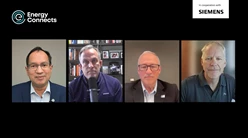The living city: reinventing urban governance in the Middle East
Cities today are complex, dynamic systems - composed of interdependent assets, aging infrastructure, constrained resources and rising citizen expectations. As cities across the Middle East grow rapidly, public-sector leaders are under pressure to manage this growth in smarter, more sustainable ways. The question is no longer if cities need to adapt, but how they can do it with the speed and flexibility today’s challenges demand.
The answer lies not in isolated digital solutions, but in integrating systems, services and data into a single, interoperable intelligence layer, which we call the Living City.
With fast-growing cities, expanding digital infrastructure and national programs like Vision 2030 and Vision 2040, the region has a real opportunity to rethink how cities are managed. Rather than follow older models, governments here can build systems that reflect today’s urban realities and future needs. But this requires a shift from domain-specific “smart city” technologies to city-wide operational intelligence, powered by platforms that connect infrastructure, automate workflows and provide real-time situational awareness.
For years, “smart cities” have promised efficiency through better connectivity and digitalisation. And we’ve seen real successes in individual domains: smarter traffic lights, digital government services and automated waste management. Often, these systems operate in isolation, separated by silos, legacy infrastructure and incompatible technologies.
A living city moves beyond that. It connects data, systems and teams across all departments, housing, energy, water, transport and public works, into one coordinated ecosystem. It responds in real time, predicts rather than reacts and continuously learns to improve citizens’ services.
As I reflect on this transformation, one thing is clear: to truly lead in the 21st century, our cities must evolve from “smart” to living. And that starts by giving them something every living being depends on, a brain.
This is where Enterprise Asset Management (EAM) becomes critical. EAM platforms like Hexagon’s serve as the city’s central nervous system and brain, processing inputs from across departments and enabling smarter, faster and more transparent decisions.
Why the Middle East is poised to lead
Our region faces a unique convergence of four powerful forces: urgency, ambition, competition and resources.
Urgency comes from our rapid urbanisation. Cities like Riyadh and Cairo have doubled in size since 2000. By 2035, an estimated 90% of GCC residents will live in cities. This growth brings massive challenges: chronic congestion, resource pressure, rising energy demand and mounting strain on public services.
Ambition is visible in the bold visions governments have outlined: Saudi Vision 2030, Egypt Vision 2030, UAE Vision 2031, Qatar Vision 2030, Kuwait Vision 20235 and Oman Vision 2040. Each sets out to reimagine public services and position cities as global hubs for innovation and sustainability.
Competition among global cities is heating up. Whether attracting investment, talent, or tourism, today’s cities must differentiate through service quality, resilience and livability.
Resources, especially digital infrastructure, give us a strong foundation. The GCC leads in 5G rollout, fiber connectivity and digital government. The IMF recently noted that several Gulf countries now outperform many advanced economies on the GovTech Maturity Index.
Hexagon is already helping municipalities around the world realise this vision. One example is Miami-Dade County in the US, which uses HxGN EAM across 11 departments, including water, transportation and its airport, to proactively manage assets, reduce costs and deliver more consistent services.
Here in the Middle East, we’ve seen a similar impact at RAKWA, the public wastewater utility in Ras Al Khaimah. By digitising its operations with HxGN EAM, RAKWA shifted from reactive to predictive maintenance, managing over 3,000 critical assets with far fewer emergency interventions and greater operational capacity. That’s the living city in action.
The role of EAM as the city’s brain
Just as the human brain interprets millions of signals from our body, an EAM platform connects data from roads, grids, pipes, buildings and mobile field teams. It enables fast, automated decisions based on real-time information, while also preserving a historical “memory” for continuous learning.
It’s this ability to unify, interpret and act on cross-functional data that makes EAM the true intelligence layer of city infrastructure.
Ultimately, the city’s brain must serve its heart: the people.
Governments that embrace EAM improve efficiency, accountability and resilience. They deliver cleaner water, more reliable power, better roads and safer public spaces. The impact goes beyond operations: less congestion, faster services and better resource use contribute to daily life and support local economies.
At Hexagon, we support cities across the region in strengthening how public assets are planned, managed and maintained. By bringing infrastructure, data, and operations into one connected system, we help governments improve service delivery, respond more effectively and plan for long-term growth.
Energy Connects includes information by a variety of sources, such as contributing experts, external journalists and comments from attendees of our events, which may contain personal opinion of others. All opinions expressed are solely the views of the author(s) and do not necessarily reflect the opinions of Energy Connects, dmg events, its parent company DMGT or any affiliates of the same.







